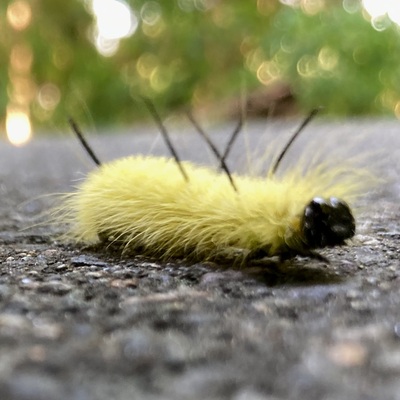#PhotoOfTheDay is a before-and-after of my current post vise. I bought it when it was “farm fresh” and then restored it to good working condition, including fabricating a new spring for it. This is my 2nd post vise and 2nd restoration.
As with my first post vise, this one is likely a hundred or more years old. They are really wonderful, important tools for blacksmithing.
#photo #photography #blacksmithing
Back in my early teens I had this fantasy that I would live in a cottage somewhere and be absolutely jacked with a wild beard and a smithy out back, wearing welding goggles and blasting NIN. Because of tools like these.
I guess it’s not too late but I have way too many hobbies.
@[email protected] I also have far too many hobbies but this one is fun and sometimes very useful!
“Specialization is for insects.” - Heinlein
@[email protected] @[email protected] @[email protected] Especially those Spanish speaking tourists looking for scrap metal.
@[email protected] @[email protected] I’d manage
@[email protected] @[email protected]
Part of my job is sharing job listings with our GIS students, and I am still amazed at just how many there are, and the relatively high starting salaries most of them have [compared to geology].
@[email protected] @[email protected] Good! My kid will eventually need a job and preferably their own money. 😂
I suspect that on the pay front being a trained and competent computer user likely helps, as opposed to just like a field surveyor of old… Maybe?
Yes, yes it does. Many GIS jobs are GIS + your current field, which can be lucractive, but other are just straight up GIS. Field surveying can be good money, though.
@[email protected]
@Geojoek @croyle When you say you had to fabricate a spring, what was involved in that? Did you have to forge or draw (I have no idea what the right term would be) your own spring steel? Or just cutting an existing spring to the correct shape/size?
Coil springs, at a minimum, are fascinating things, I watched a vid once of them being made commercially, and it’s an amazing process.
@scott @Geojoek In this specific case, a (one inch?) bar of mild steel cut to the right dimensions, bent and then with some small 'ears" beaten into it works just fine. I could have use spring steel but it’s not necessary in this case, and then would have probably involved an extra step of some heat treating at the end.
Coil springs are fascinating. I’ve forged corkscrews but not coil springs… Although I’ve forged a nice table knife out of a broken & rusted piece of coil spring that I found.
@[email protected] @[email protected] Here’s a photo of what the final spring (foreground) looked like and a photo with it in the center of the vise.


@[email protected] @[email protected] It really is a great looking vise.
@[email protected] @[email protected] For blacksmithing, I rely on it second only to my forge and anvil.
@[email protected]
These look like abstracted human or bot figures, each with one leg crossed.@[email protected] They’re also very heavy steel Rorschach tests, apparently. :)
That looks great. Also, TIL about post vices. Thanks.
@[email protected] Post vises are wonderful, very useful things, which is why they were so common back in ye olde days… They always catch my eye when I see one, like in a video game or a tv show. :)
My bench vise is one of the most useful tools in my workshop.
@[email protected] I use my bench (engineer) vise very often as well. In fact I just used it this morning! Extremely useful things…
They are of limited use for blacksmithing though. For that, you really want/need a post vise.





